Gamification
Gamification in Higher Education
Technology has led to unprecedented access to learning opportunities. It has expanded the scope of collaboration and communication in education. In higher education it has helped students to explore new subjects and deepen their understanding of difficult subjects in STEM. Gamification in higher education can help in the development of skills required for 21st century workplace. Empowered and co-creative gaming experiences that support overall value creation can result in satisfactory learning without loss of academic achievement (Murillo-Zamorano et al., 2021). This section discusses research offering a model for gamification in higher education, and provides examples of studies reporting on the implementation of gamification in MOOCs as well as engineering and education-related courses.
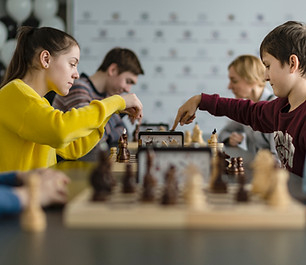
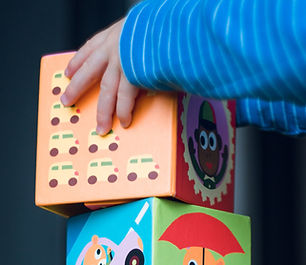
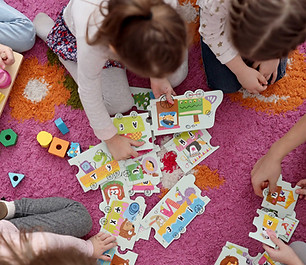
A Model for Gamification in Higher Education
Higher education has undergone changes which are a result of the entry of Generation Z who have a shorter attention span and need information in a different format, the continuous internationalization of education, the increasing volume of international mobility, introduction of multi-disciplinary programs which may require greater motivation, and the need for a sophisticated performance evaluation system (Biro, 2013). A model for the introduction of gamification in higher education is suggested by Urh et al. (2015). The model presents a comprehensive view of the gamification concept and consists of the following main elements: - Management of e-learning: consists of organizing, planning, staffing, leading and controlling all important elements of e-learning - Important elements in e-learning: consists of pedagogical, technological, design, administration, human, financial, and gamification elements - Important factors in e-learning: consists of pedagogical, technological, design, etc. - Elements of user experience: consists of project management, user interface design, content strategy, etc. - Phases of development: analysis, planning, development, implementation, and evaluation - Game mechanics: elements define the game as a rule-based system like points, badges, leader boards, etc. - Game dynamics: the emergent behavior that arises from game play when mechanics are put into use like achievement, self-expression, competition, etc. - Effects of gamification on students: consists of elements which maximize student satisfaction, motivation, efficiency, effectiveness, flow, etc.
Gamification in MOOCs
(Graz University of Technology)
Gamification has been applied in various higher education programs to enhance engagement and motivation. Massive Open Online Courses (MOOC) enjoy huge popularity but are also plagued by low completion rates. Khalil et al. (2017) deployed gamification in an Austrian MOOC platform (iMoox), which is instructed by the Graz University of Technology, in 2014, 2015, and 2016. The learning analytics showed an increase in student activity and engagement in discussion forums, quizzes and login frequency. The completion rate was increased by 26% in comparison with previous versions of the MOOC. The topic of the MOOC was general and focused on learning with the Internet. The course went for a duration of 8 weeks with a load of two hours per week. The aim of the gamification was to increase the retention rate through enhancing student engagement after testing the hypothesis, through the Activity-Motivation Framework. The framework relies on weekly gamified feedback to drive motivation. The iMoox platform offers MOOC data like quiz attempts, watching learning videos, reading and posting in a discussion forum and logging in to MOOCs. The gamification is achieved through a battery gamification element which is charged weekly based on four aspects of student activity: logging in, watching a video, completing a quiz, and participating in the quiz forum. Each of these activities contributes to filling of the battery. At the end of each week the student is rewarded with a battery icon that illustrates their prior activities with a motivational statement. A shortage of any of the activities will result in the battery being less charged. The gamification approach resulted in an increase in student interactions with the MOOC variables (logging in, watching learning videos, completing quizzes and participating in the quiz forum). The number of students with 75% battery status increased across all weeks. Further, students showed greater involvement in completing the quizzes. A stable participation rate in completing the quizzes was identified compared to previous MOOCs. There was also an increase in the certification ratio, as mentioned earlier (Khalil et al., 2017).
Gamification in MOOCs in Engineering Education (Technical University of Madrid)
Martínez-Núñez et al. (2015) present a gamification cooperative MOOC model (gcMOOC) in engineering education (carried out at the Technical University of Madrid) to improve motivation, learning level and completion rate of participants. The gcMOOC model is applied to the second edition of the course ‘Application of social networking to education: virtual communities’, which is offered on the platform MiriadaX. The course is focused on university professors who learn how to create and manage virtual communities for their classrooms. The course consists of 4 modules spread across 5 weeks. The gcMOOC consists of a virtual learning community, a Google + community where all group interactions are centralized. Nine categories (including presentations, announcements, discussion questions etc.) are proposed to classify the publications of the members in the community. The course also includes an Instagram contest, two live streaming events via Google hangout and badges for winning/completing/participating. A mixed-method design was used to investigate the influencing factors. The quantitative analysis of the success of the course includes data downloaded from the MiriadaX platform as well as exploratory factor analysis of a survey administered to students to understand the perception and attitude related to learning and motivation. The qualitative analysis consisted of 60 structured interviews of the students of the course. The results show that majority of the students felt that they learned valuable content. The high number of engineering professors that participated in this course highlight the fact that the proposed gcMOOC model, with addition of elements like the Instagram contest, is applicable to engineering education. The gamification proposed in the model links the learning platform tools with the social network used by the participants and enhanced the intrinsic motivation of the participants. The gcMOOC had a completion rate of 39.9% vs the average completion rate of 7%. By incorporating and enhancing the gamification elements in social networks of the participants, the gcMOOC model met the visibility needs of digital natives (Martínez-Núñez et al., 2015).
Gamification in Engineering Education

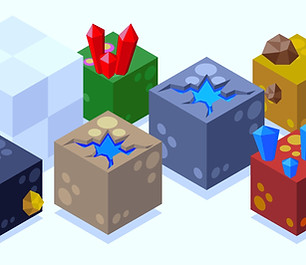
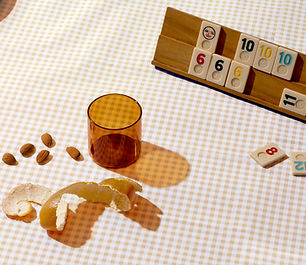
Gamification in Mathematical Modeling
Flores et al. (2016) conducted research to study the contribution of a challenge-based gamification strategy in mathematical modeling in the Engineering and Integral Calculus course at the Tecnológico de Monterrey, Mexico. The participants were 48 students and three gamification activities were applied throughout the course. The participants were divided into two groups of 24 each and further grouped into teams of four. The study was divided into three phases, the gamification activity, partial test and final exam. The gamification activity consisted of three activities with progressive levels of difficulty. The progress of each team was displayed on a leader board visible to all participants. Quantitative data was gathered through analysis of the exercises included in the partial test and final exams to test if the learning was long-term. Qualitative data was gathered in each session through observation and field notes. The test results show that there was no significant difference between the partial and final tests in almost all stages. Thus, it can be concluded that learning was sustained, which is an important issue in the learning of mathematics. The offering of challenging activities motivated the students. The relevance of cognitive, emotional and social elements in the gamified activity was noticed, as the challenges promoted the cognitive and emotional dimension through immediate feedback while the leaderboard assisted students to interact with one another and share team achievements. Discouragement was also noticed and the authors suggested providing clues so that the students can become engaged again. Overall, challenge-based gamification was seen as an optimal strategy for mathematical modelling (Flores et al., 2016).
Gamification in a Programming Course
Gamification was tested as a way to encourage engagement in a university-level programming course at the University of Mexico using the challenge-based gamification pedagogical strategy (Rojas-López et al., 2019). The experiment was administered to 29 students majoring in networks and communications, while the control group was of 31 students majoring in computer systems. The Werbach and Hunter model was used in the study. According to this model, gamification can be structured into three elements: (1) dynamics (e.g., emotional narrative, social, progressions); (2) mechanics (challenges, opportunities, rewards) and (3) components (badges, points, boards of classification, etc.). These elements can be combined according to the objectives. In this study, gamification is based on the dynamics of progression (emotive and social), mechanics of challenges and rewards (using insignias), and components (leaderboard). Gamification was offered through five collaborative and individual challenges offered throughout the course and through two interventions. Achievement in each challenge was rewarded with a set of badges. Rojas-López et al. (2019) present a detailed table with session dates, topics covered, and skills and knowledge evaluated in each session. Data was collected through a meta-evaluation instrument (questionnaire with a Likert scale and open questions at the end) and focused observations. The questionnaire was about the cognitive, social, and emotional dimensions of gamification. Both the control and experimental group were evaluated with the same checklist to measure the efficiency of the gamification strategy. The responses to the questionnaire revealed that most of the students believed that the gamification challenge aided their learning (cognitive dimension) through immediate feedback. Similarly, most students agreed that gamification favored emotional (feeling of joy and satisfaction on completion) and social dimensions (through collaborative work), corroborating previous studies which have found that challenge increases intrinsic motivation and flow. However, the problem of decay was faced because only two teams out of six finished the last two challenges in the second intervention, and none had finished it in the first intervention. Rojas-López et al. (2019) suggest that the challenges should be designed in accordance with the skill of the students for a positive learning experience. Further, the checklist revealed that the control group performed better than the experimental group. The authors suggest that the reason could be that the control group belongs to a major related directly to programming. The authors also suggest the use of avatars to aid anonymity as some students felt discomfort that their work was exposed in the leaderboard which negatively affected their motivation (Rojas-López et al., 2019).
Gamification in an Education-related Course
Hew et al. (2016) present a study on the effects of game mechanics on students’ cognitive and behavioral engagements through experimental studies conducted in an Asian university. Two randomized experiment-control group studies were conducted on students of an education-related course on designing a questionnaire. The game mechanics included points, badges and a leaderboard. The course activities were informed by the Self-Determination Theory (SDT) of motivation, which posits that humans possess basic needs of relatedness, competency and autonomy and when these needs are met by activities or social contexts, they find the tasks meaningful and continue to participate in them. The activities in the two studies were organized to address the three needs of the SDT but the experimental group in each study were provided with game mechanics. The two studies were conducted in the Summer of 2014 (22 students) and Spring of 2015 (43 students) with different groups of students. The results show that game mechanics positively affected students’ behavior with an increase in forum posts (replying to comments was awarded with an ‘active participation’ badge). Hew et al. (2016) also conclude that leader boards help generate competition and provide motivation to post more often. But no difference was found between the post tests of the control and experimental group indicating that game mechanics did not affect learning of factual knowledge. However, the quality of artifacts (more challenging questionnaires) developed by the experimental group was higher, indicating that game mechanics help in developing practical competencies. The participants suggested the use of other types of game mechanics like progression indicators to indicate how far they are from reaching their goals. They also suggested the use of scenarios or stories to engage and motivate. Finally, the participants indicated a desire to receive some material rewards, suggesting that virtual incentives might not work in the long run (Hew et al., 2016).
Conclusion
The above examples indicate gamification in higher education helped in developing practical competencies, aided the cognitive, emotional (feeling of joy) and social (through collaboration) dimensions, led to sustained learning, and high completion rates, fulfilled the reputation and visibility requirement of digital natives, enhanced intrinsic motivation and led to increased student engagement through higher participation in quizzes/watching learning videos/posting in discussion forums. Elements like points, badges, leaderboards, incorporation of elements of social networks and gamified feedbacks aid in fulfilling requirements of relatedness, competency, and autonomy. Improvements required in gamification in the above examples include the use of progression indicators, scenarios to motivate, avatars for anonymity, and personalizing the challenge level to the skill level of the students.
References
Biro, G. I. (2013). Ready, study, share: An inquiry into the didactic approach of gamification with a special view to the possible application in higher education. European Scientific Journal, 9(19), 24-26.
Flores, E. G. R., Montoya, M. S. R., & Mena, J. (2016). Challenge-based gamification and its impact in teaching mathematical modeling. Proceedings of the Fourth International Conference on Technological Ecosystems for Enhancing Multiculturality, 771–776.
Hew, K. F., Huang, B., Chu, K. W. S., & Chiu, D. K. W. (2016). Engaging Asian students through game mechanics: Findings from two experiment studies. Computers & Education, 92, 221–236.
Khalil, M., Ebner, M., Admiraal, W. F., & Pivec M, G. J. (2017). How can gamification improve MOOC student engagement? In Proceedings of the 11th European Conference on Game Based Learning (pp. 819-828). Academic Publishing Limited.
Martínez-Núñez, M., Fidalgo-Blanco, Á., & Borrás-Gené, O. (2015). New challenges for the motivation and learning in engineering education using gamification in MOOC. International Journal of Engineering Education, 32(1), 501–512.
Murillo-Zamorano, L. R., López Sánchez, J. Á., Godoy-Caballero, A. L., & Bueno Muñoz, C. (2021). Gamification and active learning in higher education: Is it possible to match digital society, academia, and students’ interests? International Journal of Educational Technology in Higher Education, 18(1).
Rojas-López, A., Rincón-Flores, E. G., Mena, J., García-Peñalvo, F. J., & Ramírez-Montoya, M. S. (2019). Engagement in the course of programming in higher education through the use of gamification. Universal Access in the Information Society, 18(3), 583–597.
Urh, M., Vukovic, G., Jereb, E., & Pintar, R. (2015). The model for introduction of gamification into e-learning in higher education. Procedia - Social and Behavioral Sciences, 197, 388–397.





